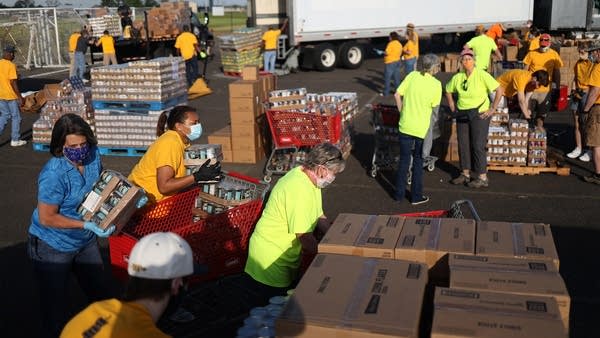Congress is hashing out how much money to provide in the next round of pandemic unemployment checks as part of a new relief package. But those earlier programs weren’t the only things set up to help people during the pandemic.
The Department of Agriculture is kicking off the third round of its Farmers to Families Food Box distribution program in September. It was created to help people facing food insecurity during the economic downturn. The idea is to package up food from farmers that might otherwise have gone to waste — meat, produce and dairy — to deliver it to needy families.
The Idaho Foodbank started distributing food boxes through the program about two months ago. Chief Development Officer Morgan Wilson said its trucks, its partners and its drive-through centers have distributed boxes to nearly 30,000 families so far.
“They’re asked very simple questions around how many people are in their household, and then that food is loaded directly into either their car or their trunk with very minimal contact,” Wilson said.
She said it does require a lot of coordination. The food bank works with vendors who package the boxes. Those vendors work with farmers who have lost a market for many of their crops.
Jared Slinde at the Great Plains Food Bank in North Dakota said his program is bringing in about 1 million pounds of produce each month.
“It’s coming from U.S. farmers, [and] it’s getting trucked up to us from states away,” Slinde said.
Food boxes can be helpful in the short run, said Craig Gundersen, a professor of agricultural economics at the University of Illinois.
But long term, he said, food boxes can’t help people on the scale of the government’s food benefits program, SNAP.
“If you were to put together these food boxes, to apply the same amount of food that’s being given through SNAP, it would be just enormous,” Gundersen said.
He added that the average benefit under SNAP is about $275 a month. The maximum can be much more. And packing up all that food in a box would be expensive.
“Almost prohibitively expensive, you know, if we were to include dairy in that, if we were going to include meat in that,” he said.
Gundersen said SNAP benefits also help people choose what food to buy themselves rather than having to rely on what’s in the box.














